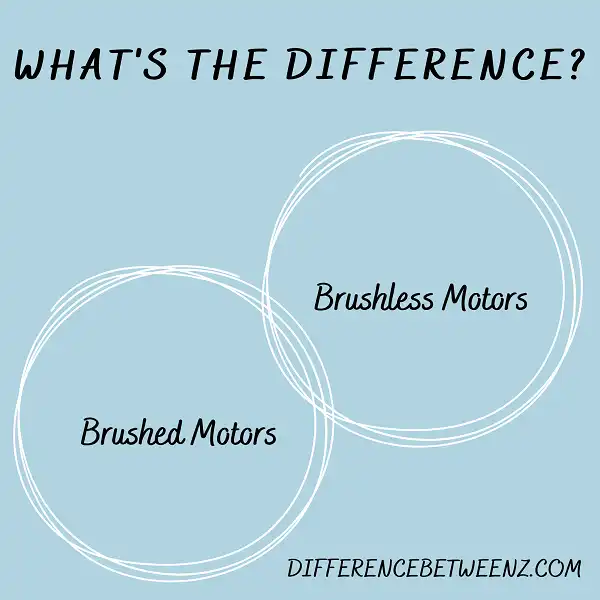When it comes to deciding between brushed motors and brushless motors, the decision can be daunting. With numerous types of electric motors on the market that vary greatly in performance, features, price points, application purposes, and more – making a call between brushless or brushed can be difficult. But with some basic knowledge on both motor types you’ll know which one is better for your specific applications. In this blog post let’s deep dive into understanding the difference between brushed and brushless DC motors so that you can make an informed decision about which motor meets all of your needs!
What is Brushed Motors?
Brushed motors refer to a type of motor that utilizes electrical brushes and rotating DC current. This type of motor has been around since the 19th century and is widely used in many applications, such as automotive, home appliances, computerized tools, wheelchairs, robotics, and industrial machinery. Brushed motors are highly reliable and versatile machines that can operate at various speeds while delivering consistent torque. While they typically require more maintenance compared to brushless counterparts, brushed motors remain one of the most convenient and cost-effective ways to propel lighter applications. Brushed motors come in all shapes and sizes for different power requirements to best suit your needs.
What is Brushless Motors?
Brushless motors are a form of electric motor that, as the name suggests, operate without the need for brushes. Brushless motors are becoming increasingly popular due to their high-efficiency ratings and low level of maintenance, as they do not require brushes that need to be changed. Brushless motors generate a higher torque output than traditional brushed motors, meaning they can run faster and more efficiently.
They have improved accessibility too, as brushless motors can be purchased easily from retailers and don’t need specialist knowledge for installation. This makes them great for robotics applications and DIY projects. Brushless motors offer numerous advantages over typically brushed motors – from greater efficiency to better durability – so it’s no wonder why so many people are opting for Brushless Motors in their projects today!
Difference between Brushed Motors and Brushless Motors
Brushed Motors and Brushless Motors have some key differences that may come as a surprise to many people.
- Brushed Motors are typically cheaper since they rely on simple mechanical components, whereas Brushless Motors require more complex technology and consequently cost more.
- Brushed Motors feature brushes that generate electricity while rubbing against commutators in the motor’s rotors; this design can also cause friction that produces heat and wears off parts easily.
- In contrast, Brushless Motors eliminate these brushes as electricity is directed through circuitry surrounding the rotor; this adds an additional layer of protection and precision but leads to a much higher price tag versus Brushed Motors.
Regardless, both motors provide efficient energy transmission when it comes to powering wheels or other objects, so customers must consider practicality in order to purchase the best motor for them!
Conclusion
When choosing an RC motor for your next project, be sure to research and understand the difference between brushed and brushless motors. Each type of motor has its own set of benefits and drawbacks that should be considered before making a purchase. By understanding the key differences between brushed and brushless motors, you can make an informed decision about which type of motor is best suited for your needs.


